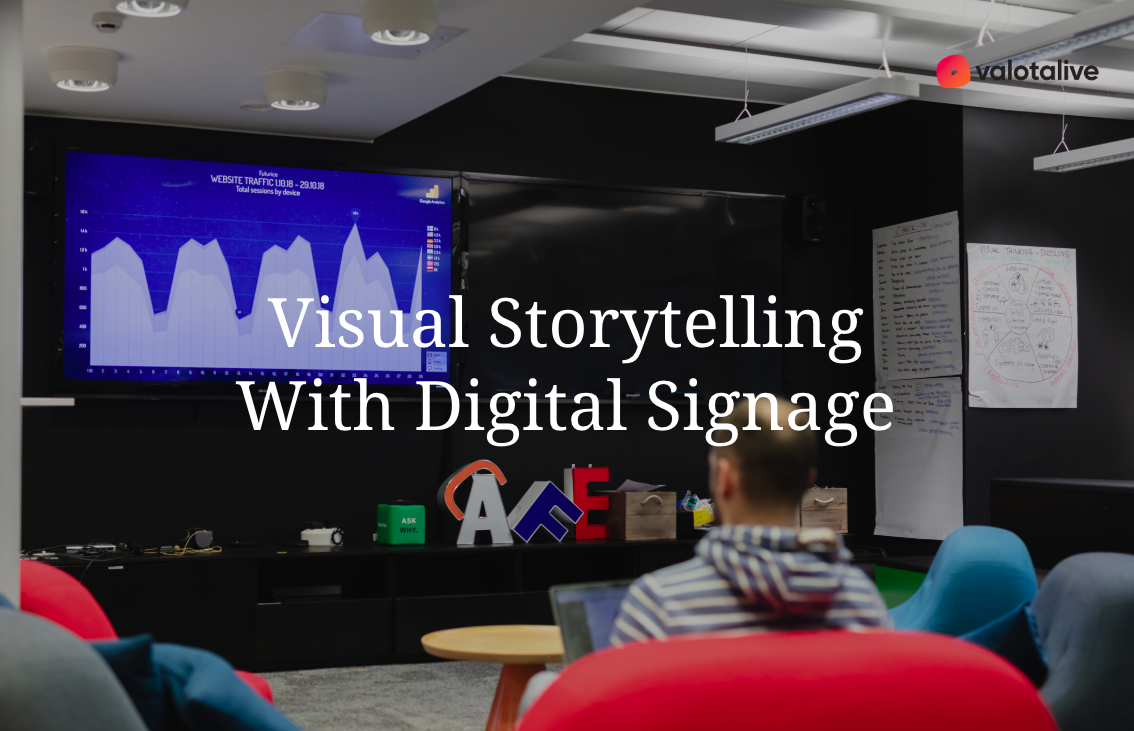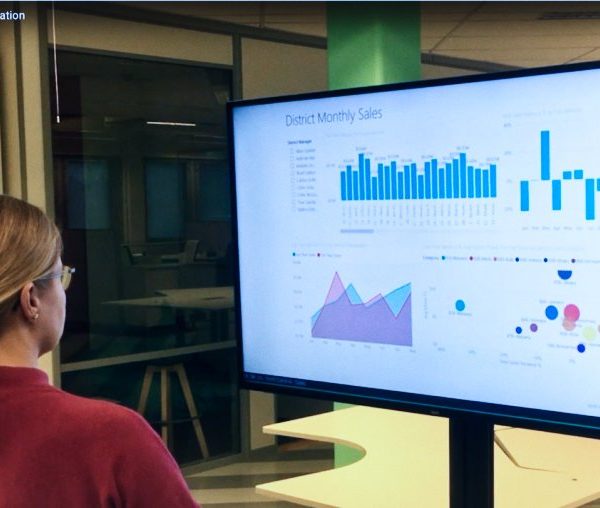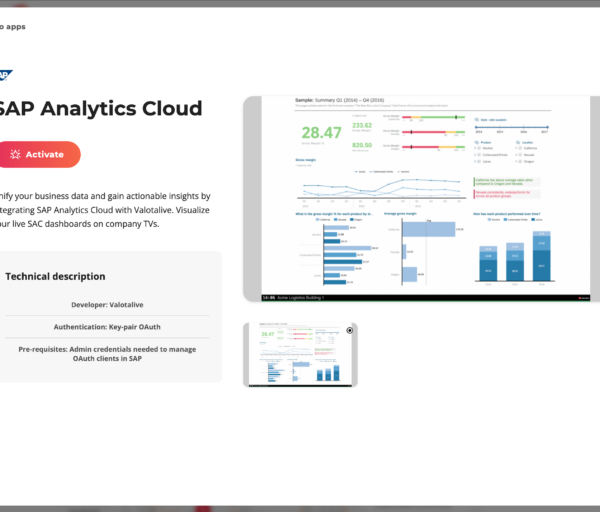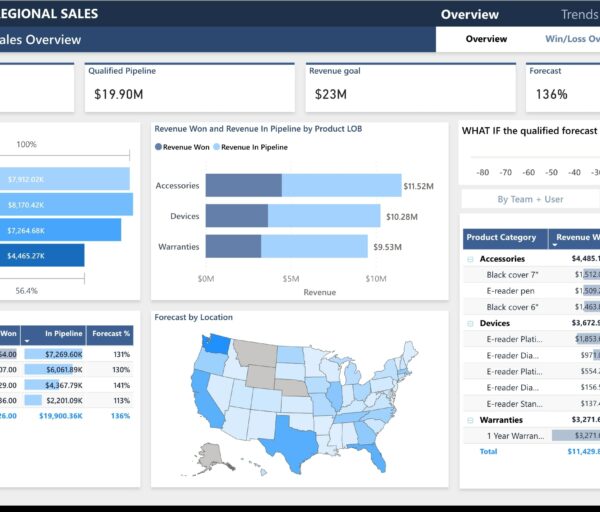Stories are what make us. They create meaning and shape our understanding of the world around us. Storytelling, especially for businesses, may seem like a relatively recent fad but it has a several thousand-year history with an importance that has never truly diminished.
In a recent Valotalive blog post about potential communication trends in 2020, visual storytelling was chosen as a crucial angle to consider. This article will focus on what visual storytelling is, where to start, and how it can be enhanced by your workplace digital signage.
Visual Storytelling
Stories can be transmitted in multiple ways, e.g. audio, text, visual, etc., and often through multiple mediums simultaneously. Visual storytelling is the act of telling stories or communicating with visual content.
Visual media, particularly videos, and images, is more effective than the written word at catching and holding people’s attention because your eyes and brain are constantly alert to and analyzing the physical world around you.
MIT neuroscientists in 2014 discovered that the brain can process images in as little as 13 milliseconds. This speed was considerably faster than indicated by previous studies, which estimated it to be at 100 milliseconds. Mary Potter, the senior author of the study, stated:
“The fact that you can do that at these high speeds indicates to us that what vision does is find concepts. That’s what the brain is doing all day long — trying to understand what we’re looking at.”
The brain, ultimately, is wired for visual storytelling. It is constantly trying to process everything you see each day by searching for and driving meaning.
With the constant bombardment of visual imagery in today’s digital age, it is vital that your company’s story stands out from the many and resonants with your audience. This is not an easy task and requires careful thought.
Before you can start creating your visual storytelling there is a crucial element that must be explored first.
First Consider WHY
The quality of a story matters. A poorly crafted story will not engage or hold your audience’s attention.
If you want to tell a compelling story about your company, you need to know your company’s “why” – the purpose behind your actions. Why do you do the things you do? As the Russian author, Fyodor Dostoyevsky, once said:
“The mystery of human existence lies not in just staying alive, but in finding something to live for.”
Last year, the annual Global Human Capital Trends report by Deloitte highlighted that understanding the purpose behind one’s work helps to motivate and sustain effort over time but it also requires a deeper connection to all participants involved to obtain its greatest impact.
The study avers, “If an organization can articulate a purpose that matters across stakeholders, it will get an impact, but if it can also tap into the purpose and meaning for the workforce and connect to what matters for the customer, the effect will amplify.” In other words, understanding how your purpose also makes a positive contribution to the lives of others makes the company’s work (and role in society) more impactful.
Younger generations want to be a part of something bigger. They want to make a difference that is meaningful for themselves and others. A 2019 study by Weber Shandwick and KRC Research highlights that millennials are significantly more likely to feel empowered to make changes in society than older generations (see chart below). The younger generation will no longer be content with doing work for work’s sake. There must be meaning behind it.
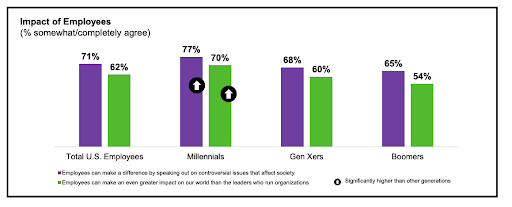
Having purpose allows individuals to act with reasoned judgment to build meaning and drive further action. People (and companies) are happier, healthier, and less stressed when they have asense of purpose.
Take time to carefully consider your company’s purpose, even if your company has been around for years. Having a clearer understanding of why you do something will motivate your employees and attract a more engaged and loyal audience. It will also allow you to get the right “feel” and “look” of your brand every time, across all media, and consistently.
Here is a great TED Talk video to help you further understand the value of knowing why you do something.
Using Digital Signage to Enhance your Visual Storytelling
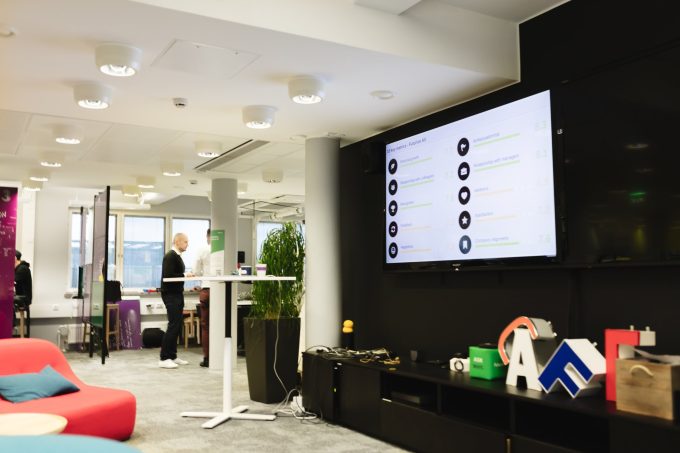
As a dynamic visual tool, digital signage is primed to help enhance a company’s communication and visual storytelling. It can help you tell the story of your brand, particularly through automation, integration, and story building.
Automation
Automation helps you target your audiences with personalized information and keep up-to-date with real-time information and data, so your story stays relevant and engaging. It takes into consideration important elements such as time, environment, and/or personal activity, etcetera.
You can create “flows” of information poised for the appropriate moment to save time and reach all of your employees and visiting clients.
In a previous post, Pasi Örn stresses the importance of automation and breaking down data silos through a simple and easy function he calls “Coffee Break Insight” or CBI. “With CBI,” Pasi avers, “you give your employees always the live situation of your business every time they go grab a coffee, tea… or banana ?.” This allows useful data to be available to all and not just marketing.
Integration
Integrating the different apps you use for business purposes into your digital signage displays and making the data available to your employees and visiting clients not only increases transparency but can become a crucial narrative tool.
A golden rule of visual storytelling is: “Show, don’t tell.” If you want to send the message that engagement is high (or possibly needs improvement) don’t just say so but rather, for example, make your Officevibe scores visible.
Toni Pienonen, a partner of the coworking space Crazy Town, highlights that they use digital signage to tell stories of local organizations and individuals and promote the lastest news and local happenings. This helps them communicate a sense of community and connection, which is important for collaborating hubs and coworking spaces.
Integration is also important for Crazy Town because “There is no need to always separately update the content for Digital Signage. As a result, the content stays fresh and allows anyone using or visiting the space to be exposed to it.” This saves them a lot of time as well.
Story Building
To have a story we first need to build it. This requires planning and creativity. With careful thought (and strategic placement), digital signage can help you build a compelling story for your brand.
For example, each area of your physical workspace could highlight the different elements of your brand’s story, e.g. its underlying beliefs, conflicts, timeline, and teachings. As people move from space to space, they could follow the progression of the brand’s journey from its past to its potential future or (for possibly greater impact) they could follow a journey as the “hero” of the story who is guided and supported by the company. This will help to highlight your values, connect to your audiences, and boost workplace morale.
As Toni insists,
“The [physical] office space should also be seen as a communication channel. Digital Signage helps in narrating the story.”
Next Steps
Creating a captivating story for your company that is communicated effectively will not happen overnight. It requires careful thought, practice, repetition, and even a little bit of faith.
Just remember to:
1. Focus on the “why” rather than the “what” of your actions to create deeper connections.
2. Be strategic and creative with the narrative tools at your disposal.
3. Have fun with it!
Further Reading you might find interesting:
How to Share Business Intelligence Data with Digital Signage
How to Share Power BI Reports with Digital Signage
